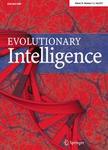版权所有:内蒙古大学图书馆 技术提供:维普资讯• 智图
内蒙古自治区呼和浩特市赛罕区大学西街235号 邮编: 010021

作者机构:Univ West England Dept Comp Sci Bristol BS16 1QY Avon England
出 版 物:《EVOLUTIONARY INTELLIGENCE》 (进化智能)
年 卷 期:2012年第5卷第1期
页 面:23-33页
核心收录:
学科分类:12[管理学] 1201[管理学-管理科学与工程(可授管理学、工学学位)] 08[工学] 0812[工学-计算机科学与技术(可授工学、理学学位)]
基 金:EPSRC [EP/H014381/1] EPSRC [EP/H014381/1] Funding Source: UKRI
主 题:A-type unorganised machines Discrete dynamical systems Evolutionary programming Imitation
摘 要:In 1948 Turing presented a general representation scheme by which to achieve artificial intelligence-his unorganised machines. Significantly, these were a form of discrete dynamical system and yet dynamical representations remain almost unexplored within evolutionary computation. Further, at the same time as also suggesting that natural evolution may provide inspiration for search mechanisms to design machines, he noted that mechanisms inspired by the social aspects of learning may prove useful. This paper presents results from an investigation into using Turing s dynamical representation designed by Evolutionary Programming and a new imitation-based, i. e., cultural, approach. Moreover, the original synchronous and an asynchronous form of unorganised machines are considered.